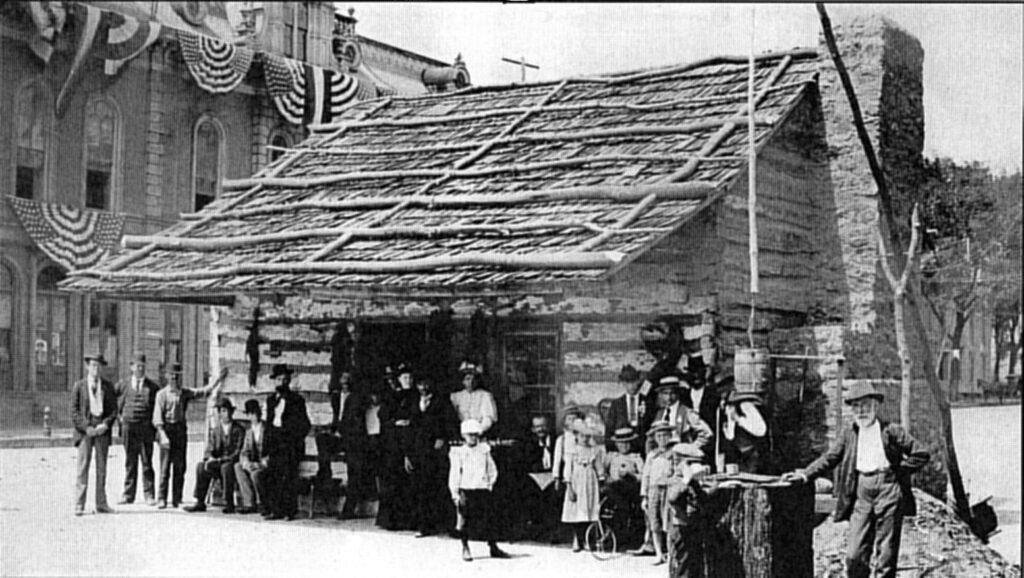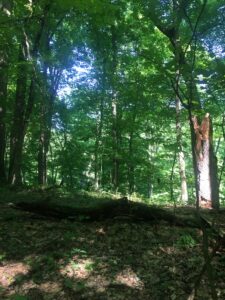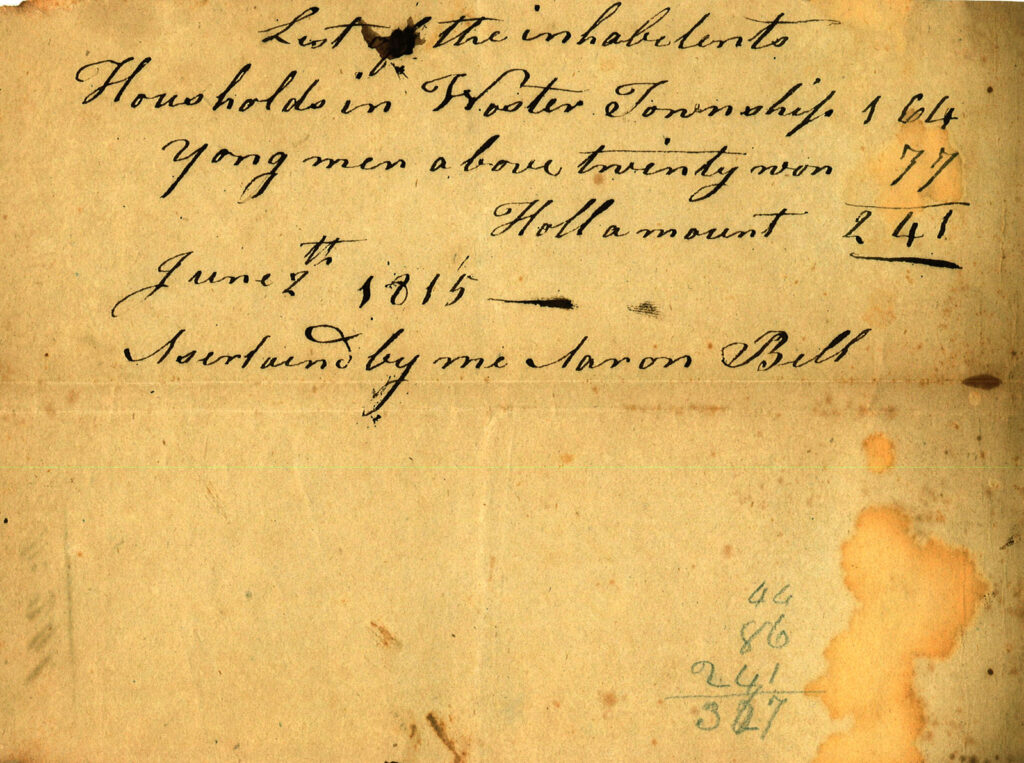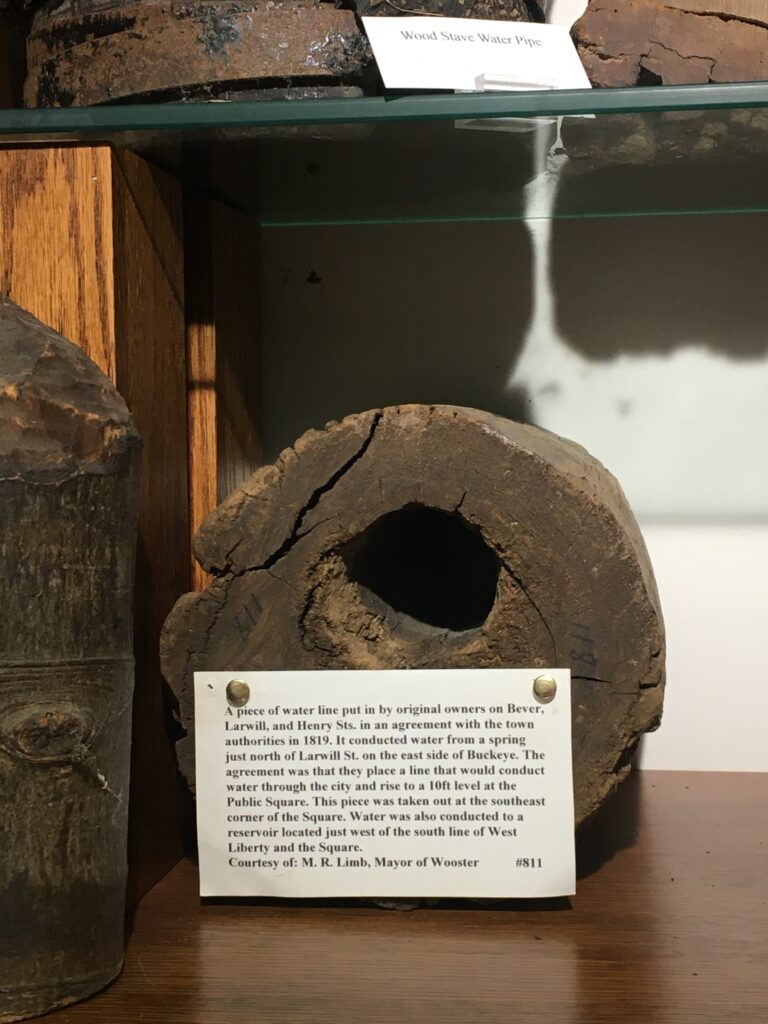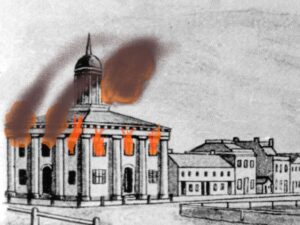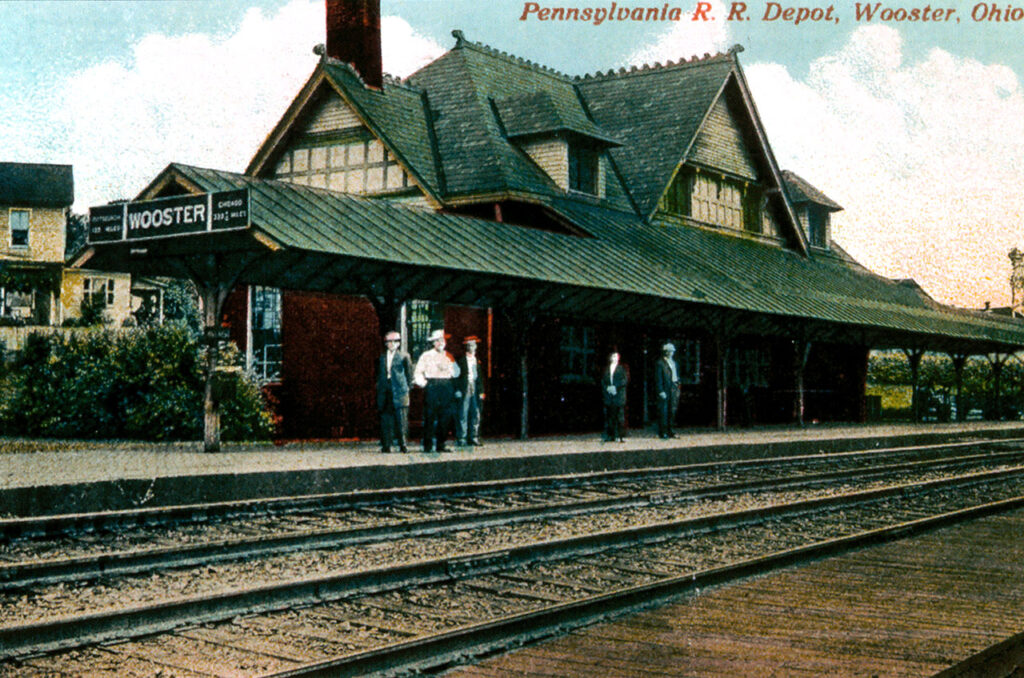As quickly as the Shawnee, Wyandotte, and Delaware were forced out, European settlers arrived to take their place, razing over any evidence of the native peoples’ existence. Wayne County soon became a hub for newcomers looking to farm the land, sell their wares, or simply start a new life. The legacy of the first European residents can be found all over the area today, from the names of streets like Bever and Larwill to preserved frontier cabins and barns. The streets that we follow every day were once only lines in the dirt drawn by men who could have never known their lasting legacy.
Settling the Town
“When the pioneer settlers came to present Wayne County, they found it densely wooded, except for the marshy districts, and the plain lands of Present Wooster, Chester, Plain, and Clinton townships”.
– Ben Douglass, History of Wayne County, page 68.
In 1807, Joseph Larwill arrived in Wayne County with the daunting task of surveying the area for the United States Land Office.1Douglass, 304 and “Vast Estate of Larwill Family Fast Being Settled By Executors: A Short History of the Early Pioneers of Wayne County—Ties of Old Friendship Shown by Will.” Wayne County Democrat, February 3, 1904, 9. Working under John Bever, Joseph Larwill had been appointed three years earlier as surveyor of Wayne, Stark, and Columbiana counties.2“Vast Estate of Larwill Family Fast Being Settled By Executors“ Joseph began the survey of Wayne County, then passed the job onto his brother William Larwill so he could monitor the work being done elsewhere. On visits to William, Joseph brought their younger brother John Larwill along to help.3“Vast Estate of Larwill Family Fast Being Settled By Executors“
When the survey was finished, William stayed in Wayne County, and in 1809 he and his brother John began clearing streets, planting crops, and raising cattle. During this time, the population grew and the new residents built houses, hotels, shops, and taverns.4Douglass, 305. The town was named by Joseph Larwill after Major General David Wooster, who fought in the American Revolution and was remembered for his valiance.5Douglass, 281-282. Wooster became the county seat in 1811, after residents convinced the Ohio legislature to move it from Madison.6Ohio History Connection. “Wooster, Ohio.” Ohio History Central.
Local Historian Harry McClarran on the First Surveyors
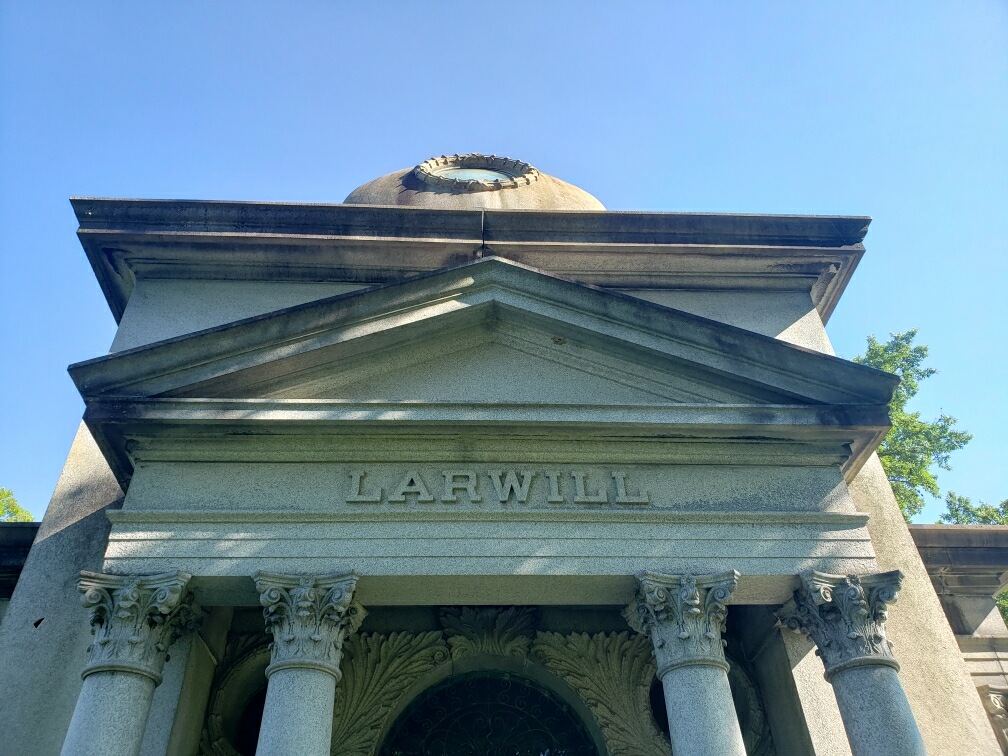
Pioneer Life
By the early 1800s, “Ohio fever” gripped thousands of settlers. People from a variety of backgrounds and ethnicities rushed to claim land on the Ohio frontier and establish a new life7R. Douglas Hurt, The Ohio Frontier: Crucible of the Old Northwest, 1720–1830 (Bloomington; Indianapolis: Indiana University Press, 1996), 232.) https://www.jstor.org/stable/j.ctt1zxz1gb.12.
However, once they arrived, many found this new world was not all milk and honey, and that living on the edge of colonialized land would be challenging.
A letter from Anna Briggs Bently, who settled with her husband and six children in Columbiana County, describes what her daily life was like as an Ohio settler, which for her involved a multitude of chores just to stay alive:
“…This has been a most laborious week to me washing, baking, scouring, cooking & I have been constantly on my feet. I feel very tired now and look forward to tomorrow as a treat for I have a great pile of patching to do that I can sit down to–and I have 4 and 1/2 loaves baked and pies enough. I have had many calls from neighbors since 1st day [Sunday]….It is customary here for neighbors to go out and help at what they call a logrolling, that is rolling in long heaps with levers the largest size logs and then piling on the brush and firing it[.] All their pay is to go home and take supper with them” – 1826.8Emily Foster, The Ohio Frontier, (Lexington, Kentucky: The University Press of Kentucky, 1996), 164. https://ebookcentral.proquest.com/lib/wooster/reader.action?docID=1915446.
Notably, her letter emphasizes the importance of community on the frontier, and the solidarity between neighbors working together to survive.
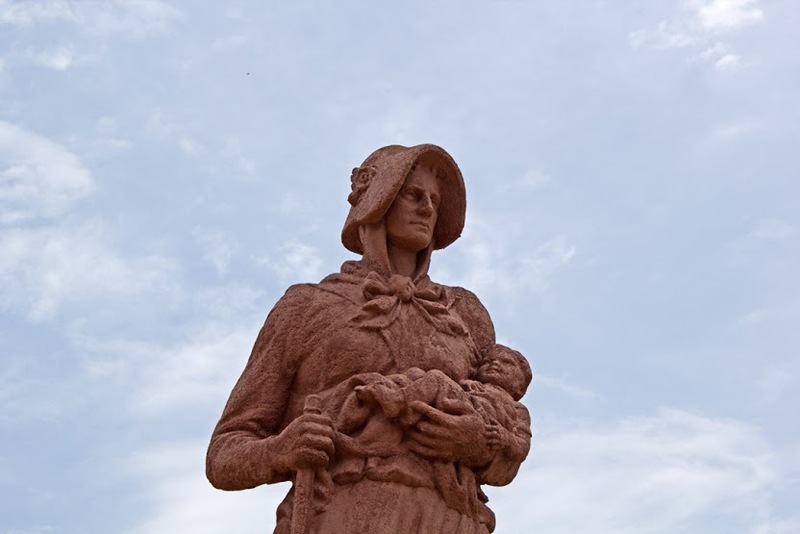
From Frontier to Town
The hardships of pioneer life were not enough to keep settlers away. With a growing population came a need for educational opportunities in the community. Reverend Thomas G. Jones and Joseph Eichar, Sr. enlisted Carlos Mather, a Yale graduate, to teach local children at the “blockhouse” school.9Douglass, 325- 326. With an English Reader and the Bible as their textbooks, what started as a one-room schoolhouse grew into a larger institution10Douglass 326. The school shuffled through new locations and teachers, among whom were Mr. Cyrus Spink and Reverend Thomas Hand.11Douglass 328-329. In 1817, Rev. Hand established the Wooster Female Seminary, and shortly after, even more schools started opening in the area.12Douglass 329-330.
Meanwhile, newcomers from all over settled in Wooster. People from Pennsylvania, New Jersey, and New England became neighbors with Germans, Scots, and Irish, who all brought their unique cultures and traditions.13Douglass, 178-179, “Our History.” First Presbyterian Church of Wooster. Accessed April 24, 2022. https://www.firstpreswooster.org/about-us/our-history. By the time Wooster became the county seat in 1811, it was no longer a frontier settlement but a full-fledged town with a resilient community at its center.
Local Historian Harry McClarran on Wooster Becoming the County Seat
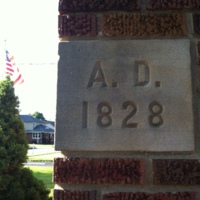
Wooster’s Early Religious Communities
From Wooster’s founding, religious communities were a part of the city’s fabric.
Conclusion: From Town to City
By 1821, the entire Northeastern Ohio area, including Wooster, had been surveyed.14Hurt, 346. The door on the once-mysterious frontier was quickly closing, and Wooster moved further every day from the one-room schoolhouses and ramshackle structures that initially dotted the landscape. The community had grown and changed to accommodate new citizens and by the 1850s the town was connected to surrounding communities, as well as Cleveland, and Pittsburgh. The Larwill brothers’ vision for Wooster had taken form; the community was now an integral part of the economic, political, and cultural landscape of Northeast Ohio.
For Further Reading:
(1) Douglass, Ben. History of Wayne County, Vol. 1 (Indianapolis, IN: B.F. Bowen & Company, History of Wayne county, Ohio, from the days of the pioneers and the first settlers to the present time : Douglass, Ben, 1836-1909 : Free Download, Borrow, and Streaming : Internet Archive.
(2) Kaufman, Paul. Indian Lore of the Muskingum Waters of Ohio, 168-188.
(3) Douglass, Ben. “Biography of Hon. John Larwill.” Wayne County Democrat (Wooster, OH), March 25th, 1875.
(4) Hurt, R. Douglas. The Ohio Frontier: Crucible of the Old Northwest, 1720–1830.
Bloomington; Indianapolis: Indiana University Press, 1996.
(5) Foster, Emily. The Ohio Frontier. Lexington, Kentucky: An Anthology of Early Writings, The University Press of Kentucky, 1996. 164.
(6) Knepper, George. Ohio and Its People. 3rd ed. Kent, Ohio: Kent State University Press, 2003. https://ebookcentral.proquest.com/lib/wooster/reader.action?docID=4403606&query=Ohio+and+Its+People.
(7) Notestein, Lucy Lillain. “The Town—‘A True Likeness’” In Wooster of the Middle West, 11-23. Kent: Kent State University Press, 1971.
